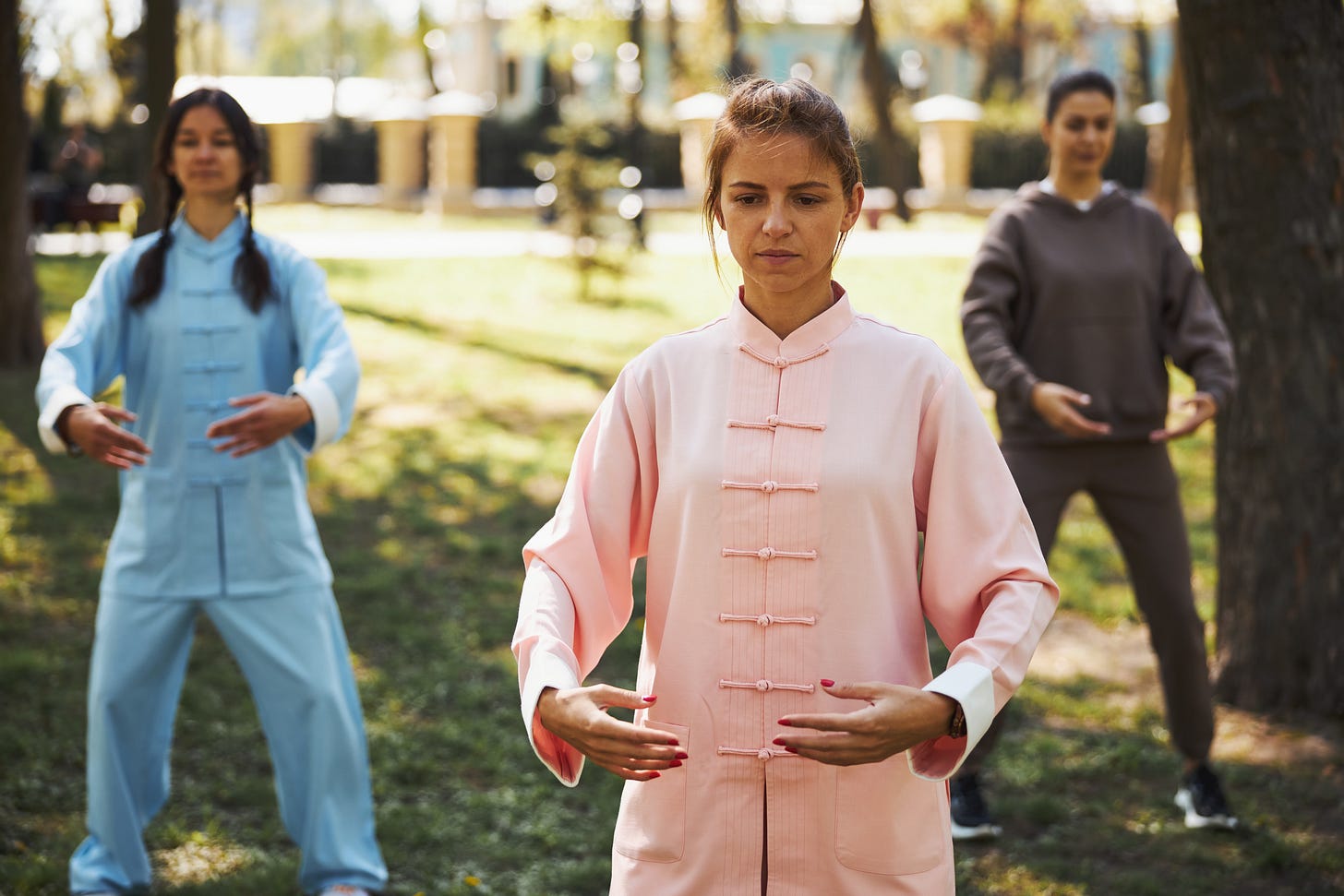Peer-Reviewed Research: Assessment of Qigong Effects on Anxiety of High-School Students: A Randomized Controlled Trial
Introduction
Adolescence is a critical developmental stage marked by intense emotional, psychological, and physiological changes. It is also a time when academic demands, social expectations, and the pressures of performance can converge to increase vulnerability to anxiety. With growing global concern over the mental health of teenagers, especially in educational settings, the search for safe, accessible, and effective interventions is more urgent than ever. The study by Rodrigues et al. (2021) enters this landscape with a thoughtful examination of Qigong as a potential remedy—one that blends ancient Eastern wisdom with modern psychophysiological research.
This randomized controlled trial explores whether Qigong, a traditional Chinese mind-body practice involving movement, breath, and focused attention, can reduce anxiety levels among high school students. It stands out not only for its methodological rigor, but also for its integrative framework, which includes both psychological self-report data and physiological measures like salivary cortisol to assess stress.
Study Design and Methodology
Conducted in two Portuguese schools, the study involved 104 students between the ages of 13 and 18. Participants were randomly assigned to one of three groups: a Qigong group (QG), which received guided practice sessions; a control group that watched nature documentaries (TVD); and a third group that continued their usual class routines without any intervention (TSD). The intervention spanned six weeks, with each Qigong session lasting about 15–20 minutes and conducted 7 to 8 times during the study period.
The psychological assessments used were the State-Trait Anxiety Inventory (STAI-Y), a widely validated tool that measures both the immediate experience of anxiety (state) and the more enduring tendency to feel anxious (trait). Additionally, salivary cortisol samples were collected to offer a biochemical snapshot of stress levels—an important complement to self-report data, which can be influenced by subjective perception or social desirability.
The form of Qigong practiced was a Daoyin sequence—a traditional therapeutic movement series rooted in Daoist practices and Traditional Chinese Medicine (TCM). The movements were selected for their role in calming the Shen (the spirit or mind), believed in TCM to be housed in the Heart. The underlying theoretical framework here is elegant: calming the Shen through breath, movement, and mental focus can help restore balance to the internal landscape of the student, promoting emotional regulation from within.
Findings and Observations
The results of the study are compelling. The Qigong group experienced a statistically significant decrease in both state and trait anxiety scores, while the two control groups saw only marginal improvements. Specifically, state anxiety was reduced by 13.7% in the Qigong group, with significant changes evident by both the midpoint and the end of the intervention. Trait anxiety also declined meaningfully, with a 7.27% reduction by the end of the study.
Interestingly, the intervention had a more pronounced impact on male students. Among boys in the Qigong group, state anxiety dropped by nearly 20%, and trait anxiety by 8%. Female students also improved, though the changes were not statistically significant. This gender difference raises important questions about how boys and girls respond differently to mind-body interventions—a subject worth exploring in future research.
Grade level also appeared to influence the outcome. Ninth-grade students showed the greatest improvements in both forms of anxiety, suggesting that developmental stage and academic pressure may modulate responsiveness to Qigong practice. The study does not dive deeply into why this might be, but it opens the door for more targeted interventions based on school year or age.
While salivary cortisol did not show statistically significant changes, the downward trend in cortisol levels in the Qigong group—compared to a rise in the non-intervention group—is notable. The reduction in cortisol (16.7% in the QG vs. 12.4% in the TVD group) aligns with the psychological data and supports the hypothesis that Qigong can influence the physiological pathways of stress. Given the known variability of cortisol levels and the relatively short intervention period, the trend itself may be considered a positive signal.
Understanding the Mechanism
So how does Qigong bring about these changes? The answer lies in its capacity to regulate the nervous system, restore balance in the hypothalamic-pituitary-adrenal (HPA) axis, and cultivate emotional awareness. The slow, flowing movements coordinated with deep, rhythmic breathing stimulate the parasympathetic nervous system—the branch responsible for “rest and digest” functions. In contrast to the sympathetic “fight or flight” response activated by stress, parasympathetic activation calms the body, lowers heart rate, and helps downregulate cortisol production.
In addition, Qigong may serve as a form of “vegetative biofeedback,” a term the authors use to describe the practice’s ability to enhance interoceptive awareness and support internal homeostasis. Through repetition and focused attention, students begin to notice their inner states and develop the capacity to shift those states using breath, movement, and attention. This self-regulatory capacity is at the heart of many modern psychotherapeutic models, including cognitive-behavioral and mindfulness-based interventions.
In Traditional Chinese Medicine, this process is understood as harmonizing the Shen. The Shen is not merely consciousness—it is the organizing intelligence of the body, responsible for clarity, calm, and emotional stability. When the Shen is disturbed, the person may experience anxiety, confusion, or insomnia. The Daoyin form used in this study focuses on the Shaoyin channel—the Heart-Kidney axis—believed to be central to emotional resilience and willpower. From this perspective, Qigong is not just a relaxation technique; it is a subtle and profound reorganization of mind-body dynamics.
Implications for Education and Mental Health
What makes this study particularly valuable is its practical relevance. The intervention was brief, non-invasive, and easily integrated into the school day. Students did not need special clothing or equipment. Teachers noted informally that students seemed calmer and more focused after practice. In a world where schools are overwhelmed and mental health resources are stretched thin, the ability to offer something so simple yet effective is a significant contribution.
Qigong also appears to offer particular value for male students—who are often underrepresented in mental health support programs and may be less willing to engage in talk-based therapy. The embodied, non-verbal nature of Qigong provides a safe and culturally neutral way to introduce self-regulation skills without stigma.
While more research is needed to refine the approach, explore its long-term effects, and determine the optimal frequency and duration of practice, this study lays a strong foundation. The authors are careful in their conclusions, noting the limits of generalizability and the importance of replicating the study in diverse settings. Nonetheless, the evidence presented here supports the inclusion of Qigong as a complementary strategy in adolescent mental health care.
Conclusion
Rodrigues et al. (2021) have crafted a thoughtful and timely study that bridges the gap between traditional healing arts and contemporary scientific research. Their findings suggest that Qigong is more than just physical exercise—it is a deeply integrative practice that offers young people tools for self-awareness, emotional regulation, and physiological balance.
In a time when adolescent anxiety is on the rise and schools are seeking innovative solutions, Qigong presents itself as a viable, cost-effective, and culturally adaptable option. It aligns well with modern understandings of mind-body interaction, and at the same time honors the ancient wisdom from which it originates. As research like this continues to grow, we may see Qigong take its rightful place alongside other evidence-based practices in the future of holistic education and mental health.
Reference:
Rodrigues, J. M., Matos, L. C., Francisco, N., Dias, A., Azevedo, J., & Machado, J. (2021). Assessment of Qigong Effects on Anxiety of High-School Students: A Randomized Controlled Trial. Advances in Mind-Body Medicine, 35(3), 10–19.
Discover your inner vitality with Red Dragon Qigong, a transformative course designed to harmonize body, vital energy, and mind. Rooted in the ancient wisdom of Traditional Chinese Medicine and Daoist philosophy, and enhanced with modern scientific insights, this course guides you through powerful Qigong practices that boost energy, reduce stress, and improve overall health. Whether you're a beginner or experienced practitioner, you'll learn techniques that cultivate balance and resilience, empowering you to thrive in daily life.
Join thousands of students on this journey of self-discovery and transformation. Enroll now and experience the power of Red Dragon Qigong!
👉 Visit CLICK HERE to get 50% off and start your practice today!



